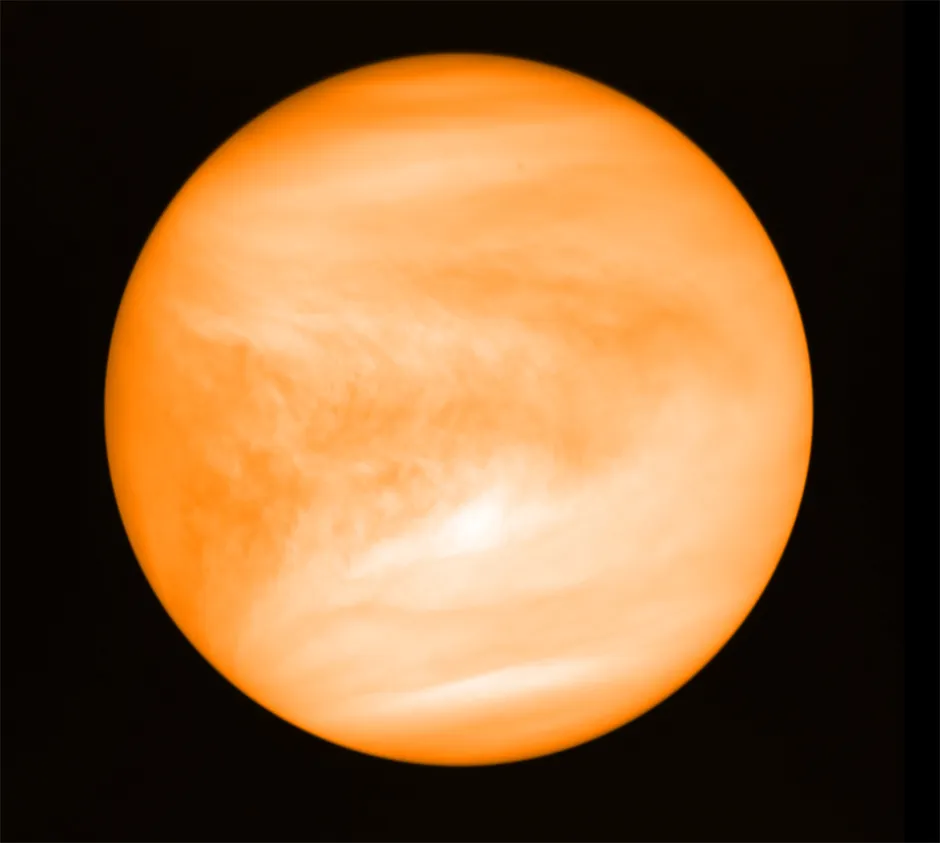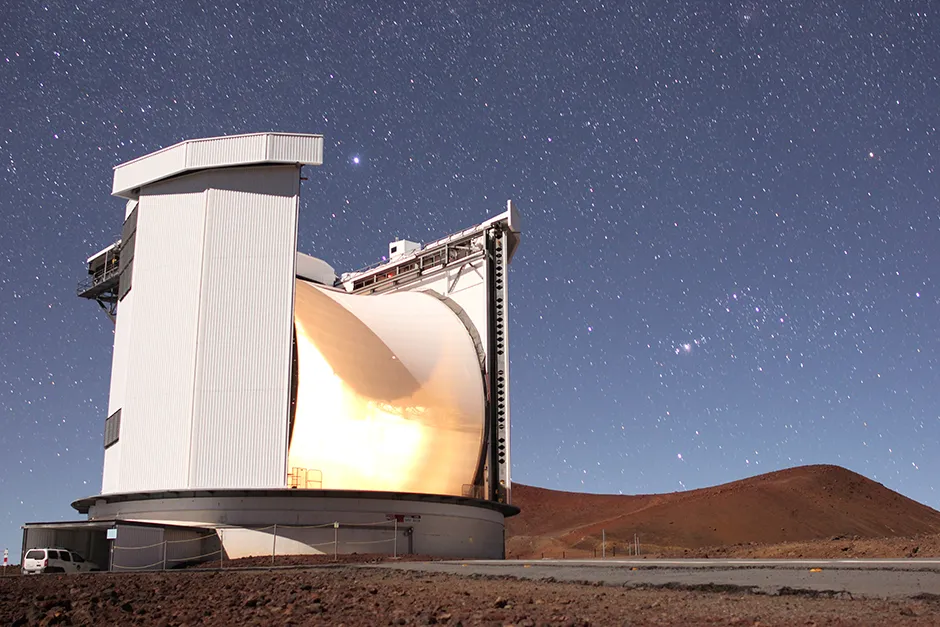A team of astronomers detected the molecule phosphine in clouds above the surface of the Earth’s neighbour. The team suggest that the phosphine could be produced by microbial life living in the highly acidic clouds.
On Earth, the only sources of phosphine are industrial processes, and microbes that live in an oxygen-free environment. This had lead to the team to consider whether the molecule might be a biosignature of alien life.
The team detected the signature using the James Clerk Maxwell Telescope in Hawaii, and studied it further with the Atacama Large Millimeter/submillimeterArray (ALMA) in Chile. They looked for phosphine using a technique called absorption spectroscopy.
So have the team found alien life? “We have no idea if this is what is going on, but at the moment it seems less impossible than other explanations.” said team member Dr Anita Richards of the University of Manchester who co-ordinated the project with the ALMA network of telescopes in Chile.
Read more about extraterrestrial life:
- Wild ideas in science: We've already found life on Mars
- The weird worlds alien life could potentially survive on
Professor Jane Greaves of Cardiff University, who led the team, said: “This was an experiment made out of pure curiosity, really – taking advantage of JCMT’s powerful technology, and thinking about future instruments. I thought we’d just be able to rule out extreme scenarios, like the clouds being stuffed full of organisms. When we got the first hints of phosphine in Venus’ spectrum, it was a shock!”
Absorption spectroscopy analyses the light from a nearby star, in this case the Sun, that has passed through the atmosphere of a planet to look for missing wavelengths.

“When light passes through a gas, it will rob that light of certain wavelengths depending upon the structure of the molecule,” said Professor Charles Cockell, an astrobiologist at the University of Edinburgh who was not involved in the research. Since every molecule will absorb a unique set of wavelengths of light, astronomers can use the star’s light to determine what substances are present in the atmosphere.
The amount of phosphine found in the atmosphere is tiny – only 20 molecules in a billion – but it is still far more than the team could explain away. Dr William Bains of Massachusetts Institute of Technology led the work on finding alternative explanations for the presence of phosphine. They studied sunlight, minerals blown upwards from the surface, volcanoes, and lightning, but none of these could produce more than 0.0001 per cent of the phosphine found.
“At the moment, we can't explain how enough phosphine molecules could survive long enough in the Venus cloud decks to allow us to detect it,” said Dr Richards.

However, not all scientists are convinced. “I think that the simplest explanation is that we don't understand the photochemistry and geochemistry of the Venusian atmosphere,” said Prof Cockell. “I would always say that biology is a last resort when you've ruled out all other explanations.”
Part of the problem comes down to Venus’s inhospitable atmosphere. Even though the clouds provide a comfortable temperature and pressure, any life would have to deal with 90 per cent sulphuric acid. “There's no environment on the Earth similar to that that can sustain life,” said Prof Cockell. “So for me, the life explanation is not plausible.”
Even so, Prof Cockell is excited by the news. “I think despite all my negativism, it is very exciting,” he said. “There might be planets that are habitable where [phosphine] is a signature of biology. So, being able to detect it in another planetary atmosphere is an immensely important thing to be able to do. It's a really good contribution to the search for life in exoplanets.”
The next steps for the team are to spend more telescope time looking at the clouds of Venus, looking for other biosignatures and studying exactly where the phosphine is found. Future space missions could also play a role in searching our neighbor for signs of life.
“I’m particularly delighted to see UK scientists leading such an important breakthrough,” said Professor Emma Bunce, President of the Royal Astronomical Society, “something that makes a strong case for a return space mission to Venus.”